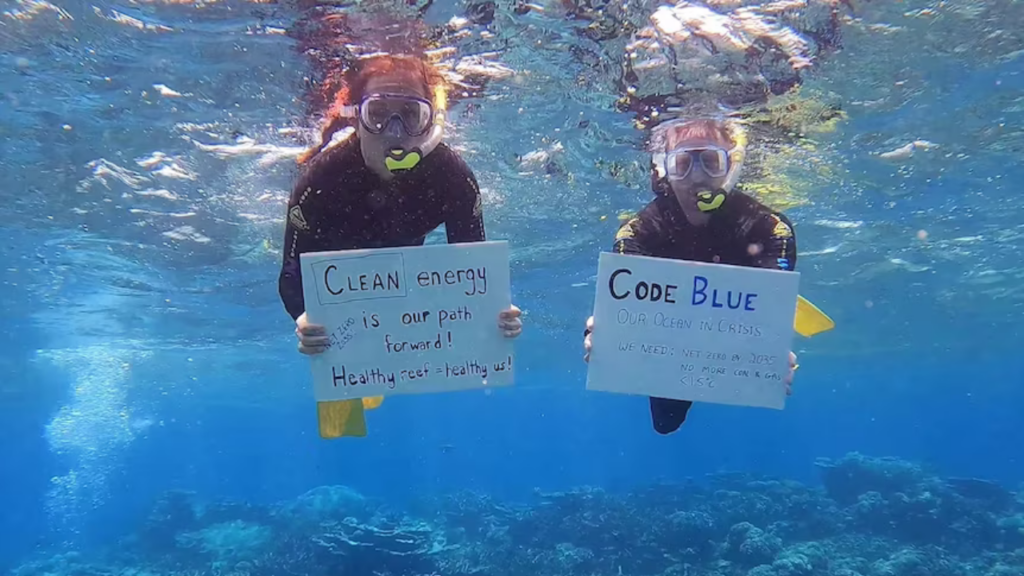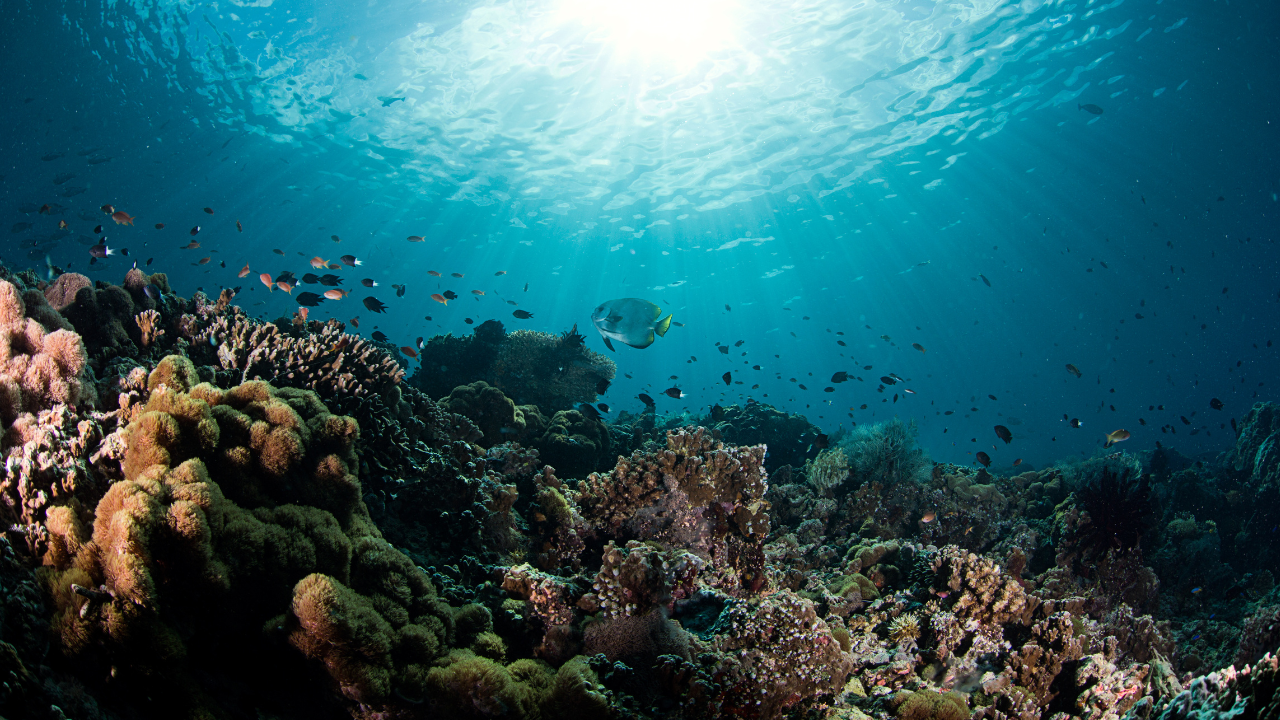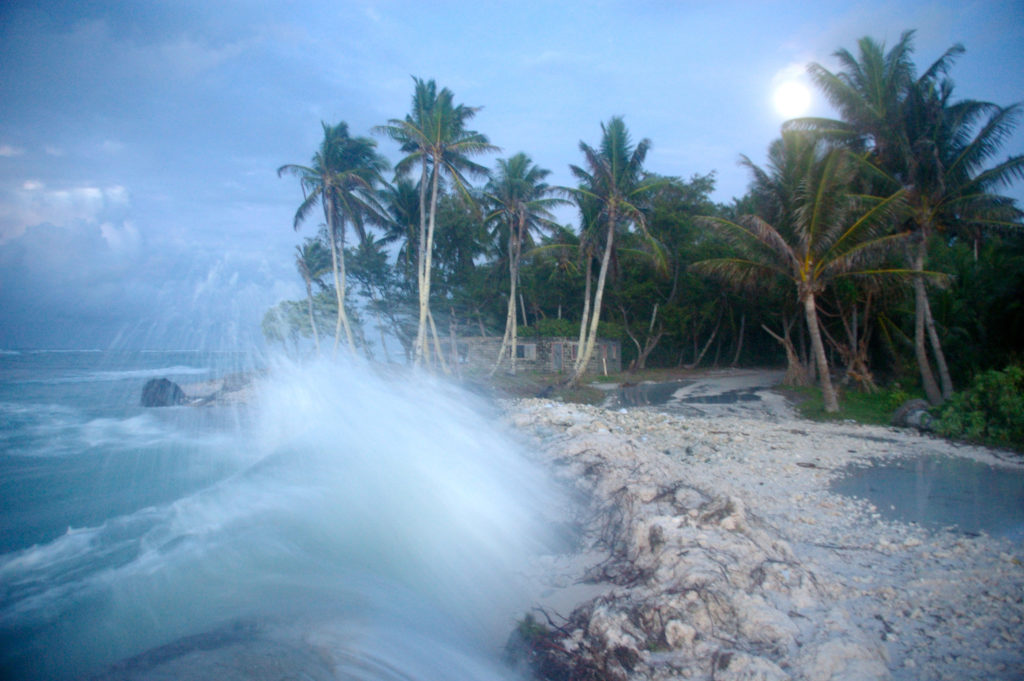I climb back on the boat, comparing notes with ocean scientist Professor Jodie Rummer – my snorkelling buddy for the day – on what we’d spotted below the sea’s surface. A white tip reef shark, a school of barracudas, giant clams, acres of bright blue staghorn corals. It doesn’t matter how many times you set eyes on a healthy coral reef – it blows you away every time.
We are up on a northern part of the Great Barrier Reef for the launch of Code Blue – the Climate Council’s first comprehensive report on climate change and our oceans.
Today was a stark reminder of just how much hangs in the balance – what we are losing, but what we still can and must fight to save.
We saw healthy patches of reef, some of which have been lovingly tended by marine scientists and assisted in their recovery. But we also saw vast tracts that can only be described as coral boneyards – areas that have never recovered from successive marine heatwaves.
The truth is that our Great Barrier Reef, and indeed our ocean at large, is in very serious trouble. As we head into another El Niño summer, there are well-founded fears of another devastating mass bleaching event.
Read Code Blue: Our Oceans in crisis report

Photographer: Tahn Miller, with divers Jodie Rummer and Simon Bradshaw.
More than half a billion people worldwide depend on coral reefs for their food, livelihoods, and the protection of their coastlines. Tragically, the damage to tropical coral reefs is but one aspect of a much larger crisis affecting our oceans. A crisis brought on by climate change, driven by the burning of coal, oil and gas.
The vast majority – around 93% – of the extra heat we have trapped by burning fossil fuels has ended up in the ocean. It’s an astonishing amount of energy – equivalent to detonating five Hiroshima atomic bombs every second, or enough energy to boil Sydney Harbour every eight minutes.
This has consequences. More frequent and severe heat waves are pushing coral reefs and other critical marine ecosystems to the brink. Ice sheets are melting at an accelerating rate, driving up sea levels and displacing coastal communities. The ocean circulations and currents that distribute heat, rainfall and nutrients around the planet are slowing and may even be headed for collapse.






The potential impacts of these abrupt changes are truly profound. We are talking about the unravelling of our very life support system.
All life depends on the water cycle that starts in the ocean. The ocean and the atmosphere form a coupled system that shapes the Earth’s climate, creating the stable conditions that have enabled advanced human societies to develop. Humans also need the ocean in other fundamental ways: every second breath we take comes from oxygen produced by the ocean. Even if we live thousands of miles inland, our weather is shaped by what is happening in our oceans.
The ocean’s enormous capacity to absorb heat may have masked the true extent of the damage. But today these changes are coming back to bite us. 2023 is almost certain to register as the Earth’s warmest year on record, and Australia faces yet another climate reckoning with a devastatingly early start to our fire season, and warnings of worse to come.
Put simply, the global dance between the ocean and the atmosphere underpins life as we know it.
The latest observations suggest we are perilously close to dangerous tipping points for our ocean that could trigger millennia of irreversible sea level rise and the collapse of the ocean circulations and marine ecosystems upon which we depend for our very survival.
We ignore these warnings at our peril. There is only one solution to our climate and ocean crises, and that is to leave our fossil fuels in the ground and get our emissions plummeting. Fast. Australia must aim to reduce its emissions by 75% below 2005 level by 2030, and reach net zero by 2035. And we must urgently update our outdated national environment law so that it takes account of the dangers of climate change and puts a halt to the reckless expansion of our fossil fuel industries.
In hospital emergency rooms, a code blue is called when a life-threatening event is underway. We are calling a code blue for our oceans today, because the crisis in our oceans threatens all life as we know it – including our own.










